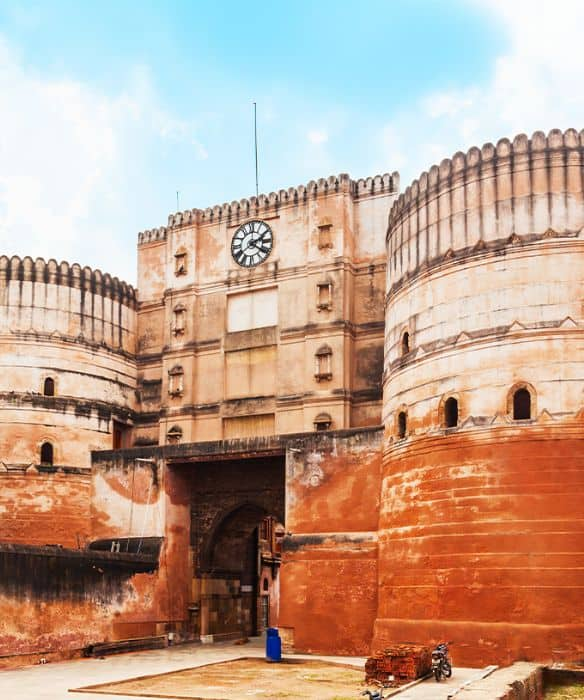Stay logged in to proceed with bookings, orders and offers.
On changing the terminal, you will loose items in your cart. Are you sure you want to change your terminal?
Behind the stage lights of 3 iconic theatres in Mumbai
For many, growing up as a child in Mumbai meant access to wonderful places and experiences; there’s Marine Drive with its twinkling lights and welcoming sea view, you have Bandra with its myriad tiny lanes packed with bungalows and family homes, and the golden stretch of Juhu beach was my favourite playground.
As I grew older and entered college, my interests changed and became more esoteric. I now wanted to spend my time 'expanding my horizons.' Cinema halls such as the Eros and Sterling tempted us almost every day with their latest blockbusters. David Sassoon and the British Council libraries wooed us with their promise of quiet reading rooms.
Theatres, too, opened up a whole new world, transformative and exciting.
Today, Mumbai has plenty of theatres hosting daily dramatic plays. However, I would like to go down memory lane and revisit three of my favourite spaces. All three continue to enchant, entertain and offer a respite from the daily grind. Come along as I take you on a tour behind the spotlights.
You can’t mention theatres in Mumbai without thinking of the Prithvi Theatre in Juhu. Actor Prithviraj Kapoor dreamed of building a base for his theatre company in 1944. This was to act as a home and catalyst for creativity and dramatic expression. He earmarked two plots of land in Juhu for this venture. However, this grand plan never took off.
The plan was revived several years later by his son and actor, Shashi Kapoor, with his wife, Jennifer. They set up the Shri Prithviraj Kapoor Memorial Trust and Research Foundation in 1975. The foundation aimed to promote Hindi theatre and aid theatre workers. Prithvi Theatre was inaugurated in 1978 to contribute towards these efforts.
The theatre operates on a completely non-profit basis. It continues to highlight dramatic talent through daily plays and performances. Regular workshops, summer camps, film screenings and poetry readings showcase contemporary talent.
I recently visited Prithvi for a marvellous play by Naseeruddin Shah. I was glad to see that the theatre retained its style and culture, and it immersed me in its intimate setting even after a decade. The stage is smaller than other theatres, but it still welcomed everyone with its expansive open foyer. I later discovered that the decision not to enclose the theatre space with a gate was deliberate.
When the play started, I found myself becoming a part of the experience. The actors moved among the audience freely, and the acoustics transported me into their tale. It’s not surprising that Prithvi has a stringent policy of disallowing latecomers. No one is allowed after the third warning bell. You can't leave mid-performance and have to stay for the duration of the play. I feel more places in Mumbai could benefit from these rules. I suggest you go earlier than planned.
Go earlier than planned and make time for at least one Irish coffee from the Prithvi Cafe before the show. You can have one more during intermission and maybe one after the show. I won't judge! Find yourself a bench amid the trees and fairy lights. Sip that delectable brew and enjoy eavesdropping on the wonderful post-play conversations.
The cafe is open daily between 11 am and 10 pm, as is the bookshop within the premises. Prithvi Theatre can be reached by train, bus and auto rickshaw. Parking is not available at the venue. There are plays every day except Monday, and the schedule for the month is available on their official website.
Tickets range between INR 150 to INR 1,000. You can buy tickets at the last minute from the counter. However, don't count on this. I recommend pre-booking as the seats always sell out.
At the far end of the bustling business district of Nariman Point lies a crescent of calm. The National Centre for the Performing Arts, or NCPA, provides essential dramatic and cultural flair to the city.
The NCPA was built in 1969 as a passion project of Dr Jamshed Bhabha and JRD Tata. They envisioned a place in Mumbai that attracted all types of art. The NCPA provides space for outstanding theatre, revolutionary cinema, dance recitals and music performances. It even has an art gallery and a library. The best and the brightest of legends have performed on its stages over the years. Its roster only continues to grow!
The NCPA has five theatres of varying sizes within its leafy compound. It's no surprise that it has the best equipment, on-site lighting and staging experts. Large productions such as operas, entire symphony orchestras, and even ballet performances are staged here. The official website states that the NCPA hosts over 600 performances every year. Each of the five different theatres of NCPA has a unique design and purpose in mind. For example, famous American architect Philip Johnson designed the Tata Theatre to have a post-modern elegance.
The Jamshed Bhabha Theatre loomed at one end of the 3,400,000 sq ft complex. Its vast auditorium has a seating capacity of 1,000 people. At a recent play, I stood in awe of the magnificent chandelier above. The peacock-blue walls and marble staircase set the stage for the drama to follow.
My favourite space at the NCPA is the Experimental Theatre. This intimate venue has only 264 seats staggered around and above the stage, which can be moved into any configuration depending on the performance. Many an evening I had spent tucked into my seat, with pure theatre magic transporting me to another universe.
The NCPA can be reached by public transport. Parking is also available within and around the venue. I recommend you go early and enjoy a stroll down Marine Drive before the show. The bracing sea breeze and chatter of the crowds add magic to what awaits.
In 1908, two men envisaged a space never before seen in Mumbai. They were Jehangir Karaka, a businessman and owner of a coal company, and Maurice Bandmann, a performing artist from Calcutta. They built the first opera house in the city.
The foundation stone was laid by none other than the reigning King George V in 1911. The construction continued till 1915, and the final structure was an impressive blend of Indian and Western architecture.
The Royal Opera House, as it was known, soon became the talk of the town. The who’s who of Bombay flocked to its gilded seats and exclusive theatre boxes. Though it began with operas, the focus soon changed to other performances. The Opera House was known as a cinema and a venue for fashion shows and musical concerts by the mid-1930s.
Come the 80s, its popularity significantly declined. The maintenance and upkeep of this grandiose structure became difficult. It finally closed down in 1993. As children, we drove by its crumbling facade, picturing what it must have looked like in its heyday.
Fortunately, the government of Maharashtra decided to restore this cultural institution to its former glory in 2008. Eight years of restoration and renovation work continued under the guidance and expertise of conservationist Abha Narain Lambah.
Finally, the newly restored Opera House was revealed to the public in October 2016. It also won the Award of Merit from UNESCO in 2017 for its restoration efforts. Today, the Opera House boasts a seating of 575 spread over three levels. The outstanding sound systems ensure the best acoustics at every corner of the auditorium. A jazz bar and an all-day cafe on the premise add to its stylish new avatar.
The Opera House hosts workshops and theatrical productions, besides musicals and concerts.The exteriors may still be formidable, but there is a new casual warmth in its approach to the arts. It is now a space that no longer just caters to the elite. It has thrown open its doors to anyone passionate about entertainment; a welcome addition to Mumbai's social scene indeed!
You can access the upcoming schedule of events and details about box office and ticket bookings on their official website.
PS: Check out the fabulous shows at the Opera House during Christmas time!





The Adani One expressly disclaims all liability, direct and indirect, in respect to actions taken or not taken based on any or all the contents of this Blog. The Blog is an opinion of the contributor based on the collation of data from various sources and is provided only for information purpose. Adani One does not canvass, advertise, solicit, invite or induct for any product, merchandise, information, brand or any other materials mentioned in the Blog, nor does it obtain any monetary benefit from the same. Reader is advised to read and apply his/her intellect and discretion in this regard. Any Intellectual Property mentioned in this blog belongs to the rightful owner. We do not intent to claim any interest over the same.